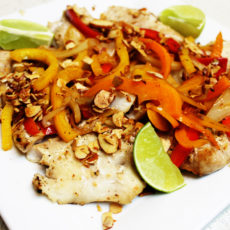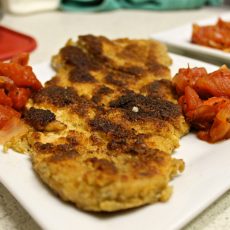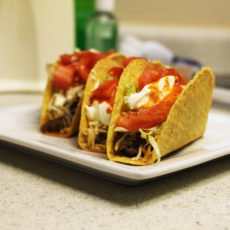Sometimes when you use recipes from old cookbooks, they can seem a bit “tone-deaf” when it comes to modern-day sensibilities about race and culture. Despite a questionable name, 11-36: Hong Kong Shrimp contains many ingredients commonly found in Chinese food.

I love the porcelain bowls they served the example dish in. The wooden chopsticks are also a great touch. What a great photo!

Bamboo shoots didn’t taste like asparagus, more like wood pulp. Not a bad wood pulp mind you, almost like a fine piece of paper with a better texture. Not that I’ve eaten a lot of paper, but the reediness of the shoots taste a lot like the flavor of paper. I swear I’m not weird.

There is no veggie bouillon in the shot because I left it out. The dish only calls for 1/2 cup so I just used water instead.

As you can see here, I wore my arm out slicing veggies. I think I got a consistent size on the green onion, celery, peppers, and mushrooms. This is important to help the ingredients cook at the same rate in the stir fry method.

At least I didn’t have to slice the bamboo shoots. I bought a can of bamboo shoots that came pre-sliced. In Photo 1 on the recipe card, you see a more whole bamboo shoot and the first step on the card is to drain and slice the shoots. These porous strips will absorb flavor.

My pan of choice for this recipe was the flat bottomed wok. It’s not the best pan, but it is useful for stir-frying a large amount of veggies.

Those are some tender crisp veggies. Here is where I added some seasonings and water to make a sauce. Next comes the shrimp.

It’s all starting to come together. I tossed the shrimp around until the mixture is all combined. It’s a very colorful dish.

Ta-Da! It’s a bowl of Hong Kong Shrimp. This dish tastes a lot like a dish you could order at any Chinese take out restaurant. What’s the best name you’ve ever heard for a Chinese restaurant? My favorite is “Kung Fu-od“. The food there wasn’t nearly delicious as the pun in the name.
GRADE: B+



